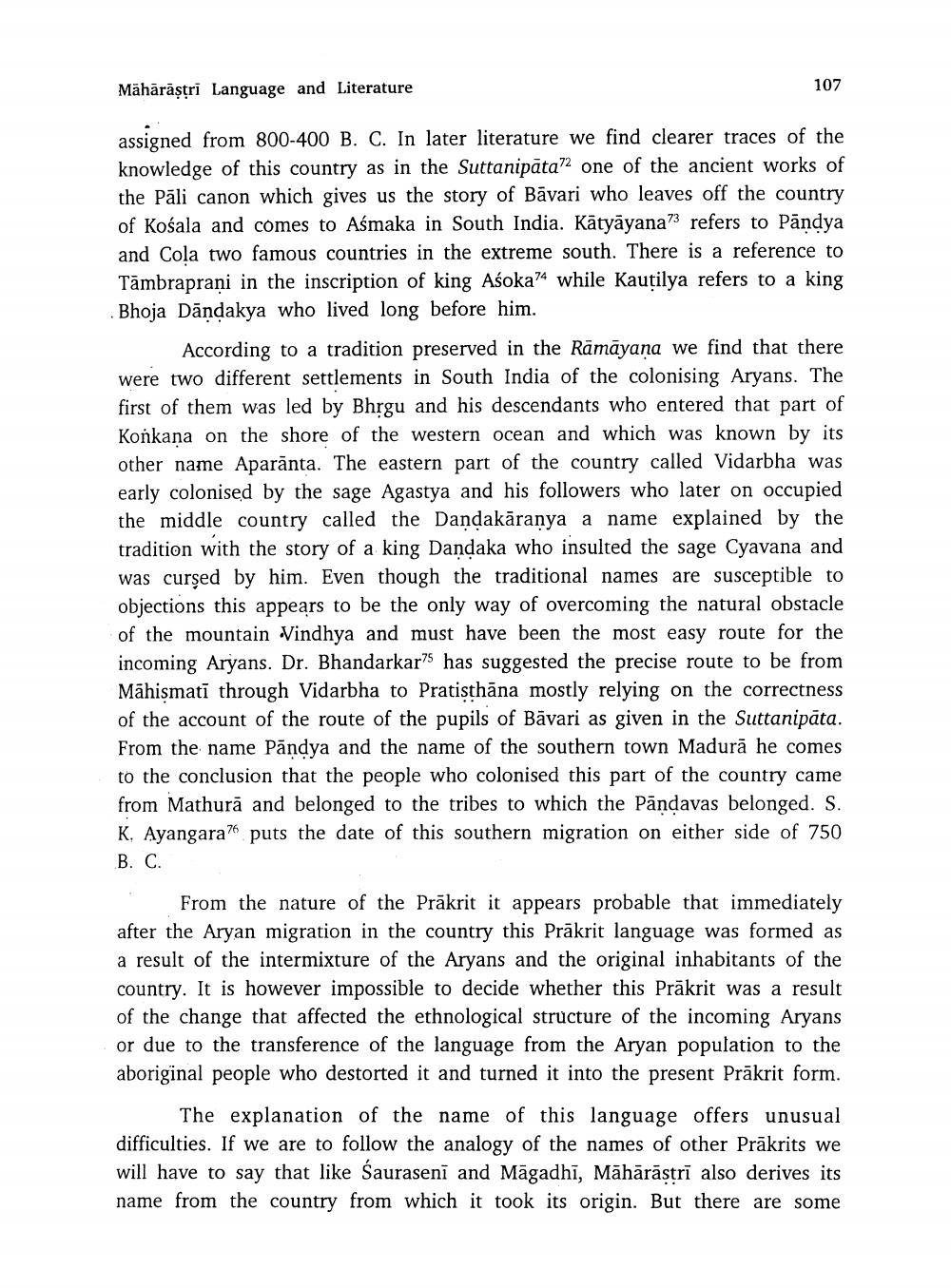________________
Mähārāştri Language and Literature
107
assigned from 800-400 B. C. In later literature we find clearer traces of the knowledge of this country as in the Suttanipāta72 one of the ancient works of the Pāli canon which gives us the story of Bāvari who leaves off the country of Kośala and comes to Asmaka in South India. Kātyāyana73 refers to Pāndya and Cola two famous countries in the extreme south. There is a reference to Tāmbraprani in the inscription of king Aśoka74 while Kautilya refers to a king Bhoja Dāndakya who lived long before him.
According to a tradition preserved in the Rāmāyana we find that there were two different settlements in South India of the colonising Aryans. The first of them was led by Bhrgu and his descendants who entered that part of Konkana on the shore of the western ocean and which was known by its other name Aparānta. The eastern part of the country called Vidarbha was early colonised by the sage Agastya and his followers who later on occupied the middle country called the Dandakāranya a name explained by the tradition with the story of a king Dandaka who insulted the sage Cyavana and was cursed by him. Even though the traditional names are susceptible to objections this appears to be the only way of overcoming the natural obstacle of the mountain Vindhya and must have been the most easy route for the incoming Aryans. Dr. Bhandarkar75 has suggested the precise route to be from Māhismatī through Vidarbha to Pratisthāna mostly relying on the correctness of the account of the route of the pupils of Bāvari as given in the Suttanipāta. From the name Pāndya and the name of the southern town Madurā he comes to the conclusion that the people who colonised this part of the country came from Mathurā and belonged to the tribes to which the Pandavas belonged. S. K. Ayangarah puts the date of this southern migration on either side of 750 B. C.
From the nature of the Prākrit it appears probable that immediately after the Aryan migration in the country this Prākrit language was formed as a result of the intermixture of the Aryans and the original inhabitants of the country. It is however impossible to decide whether this Prākrit was a result of the change that affected the ethnological structure of the incoming Aryans or due to the transference of the language from the Aryan population to the aboriginal people who destorted it and turned it into the present Prākrit form.
The explanation of the name of this language offers unusual difficulties. If we are to follow the analogy of the names of other Prākrits we will have to say that like Sauraseni and Māgadhī, Māhārāstrī also derives its name from the country from which it took its origin. But there are some




